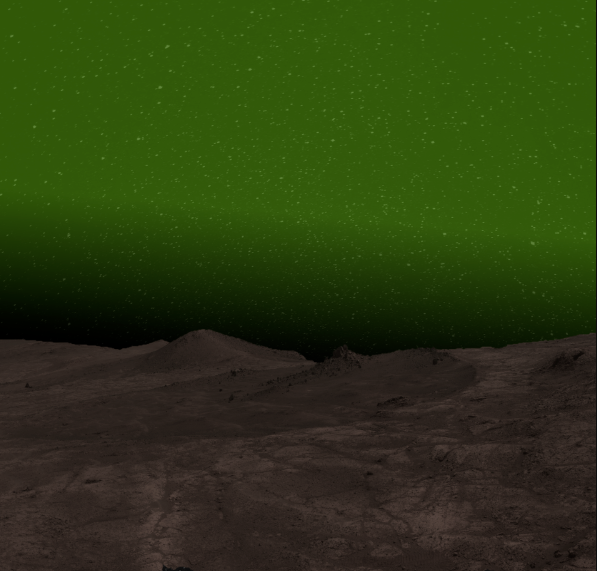The European Space Agency's (ESA) ExoMars Trace Gas Orbiter (TGO) mission has detected a soft green glow in the night sky of Mars that is visible to the human eye for the first time. As the orbiter circumnavigated Mars, it captured the optical spectrum of the Martian night sky, emitting a greenish light.
Green Light on Mars
ESA's ExoMars TGO mission has observed this visible nightglow in the Martian atmosphere, marking a significant revelation. According to ESA, this nightglow occurs when two oxygen atoms combine to create an oxygen molecule approximately 50 km above the Martian surface.
The process leading to nightglow involves the formation of oxygen atoms on Mars's dayside, where sunlight energizes carbon dioxide molecules, causing them to split.

ESA explained that these oxygen atoms then migrate to the night side, losing their solar excitation and regrouping to emit light at lower altitudes, resulting in the observed nightglow.
Lauriane Soret, a researcher from the Laboratory of Atmospheric and Planetary Physics at the University of Liège in Belgium, explained the scientific process behind the nightglow.
She noted that "this emission is due to the recombination of oxygen atoms created in the summer atmosphere and transported by winds to high winter latitudes, at altitudes of 40 to 60 km in the martian atmosphere."
Jean-Claude Gérard, lead author of the study and a planetary scientist at the University of Liège, expressed surprise at these observations, emphasizing their relevance for future missions to Mars.
The nightglow's illumination could be bright enough to guide future astronauts and rovers in the dark Martian nights, akin to moonlit clouds on Earth.
The ExoMars TGO is positioned at an altitude of 400 km above the Red Planet, and it utilizes the ultraviolet-visible channel of its NOMAD instrument to monitor the night side of Mars.
This instrument covers a spectral range from near ultraviolet to red light and was strategically oriented towards the edge of Mars for optimal observation of the upper atmosphere.
The NOMAD experiment, led by the Royal Belgian Institute for Space Aeronomy in collaboration with teams from Spain, Italy, and the United Kingdom, among others, has played a crucial role in detecting the green nightglow on Mars.
Nightglow as a Tracer
ESA noted that nightglow serves as a tracer for atmospheric processes, offering valuable insights into the composition and dynamics of Mars' upper atmosphere, which is challenging to measure otherwise.
It can provide information on oxygen density and reveal how energy is deposited by sunlight and the solar wind, contributing to a better understanding of the Martian atmosphere.
This discovery not only contributes to scientific knowledge but also holds significance for future Mars missions, as atmospheric properties directly impact the performance of orbiting satellites and probes descending to the Martian surface.
The exploration of nightglow on Mars adds a new dimension to our understanding of planetary atmospheres and their unique characteristics.
Related Article : More Americans Prefer NASA Missions Against Killer Asteroids Instead of Mars Expeditions: Survey

ⓒ 2025 TECHTIMES.com All rights reserved. Do not reproduce without permission.




